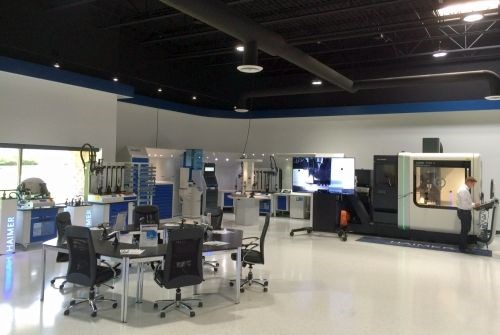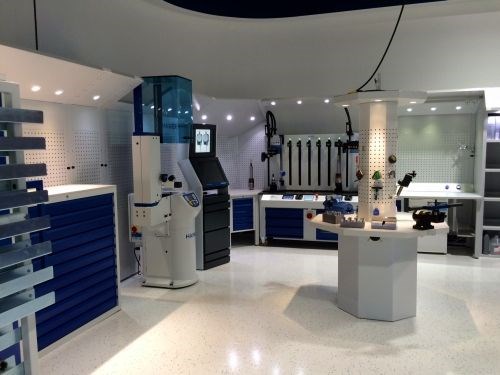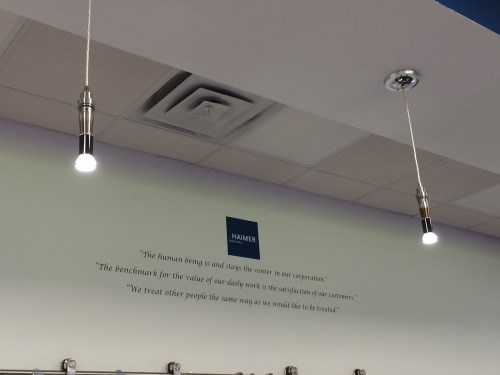Inside Haimer’s Expanded North American Headquarters
The companyŌĆÖs shrink-fit, balancing and tooling technologies are on display in a new 25,000 square-foot facility.
Share






Haimer’s 25,000-square-foot facility includes a training and demo area for the company’s range of shrink-fit, balancing and tooling technology.
Recently, I got to visit Haimer’s newly expanded North American headquarters in Villa Park, Illinois. The company’s facility has grown from 9,000 to 25,000 square feet where it maintains $5.5 million in inventory for its range of tool holders, shrink fit machines, balancing machines, 3D-sensors and cutting tools.

This area I call a tool room for lean manufacturers.
The expansion includes new training area for customers and distributors as well as a showroom/demo area with high-speed VMC. The company also has a five-axis tool grinding machine and extends its German hospitality to visitors with a large reception area and 25-foot-long bar.

The tool holder lights above the 25-foot-long hospitality bar were a nice touch.
As I toured the facility, I called to mind a number of articles we’ve written about the company’s tooling technology. For example:
- The value of balancing for low-rpm operations;
- The benefits of an alternate coolant delivery system;
- The importance of shrink-fit technology for challenging materials; and
- A tool holder safety system that provides pull-out protection for tools in high performance cutting.
Related Content
-
Quick-Change Tool Heads Reduce Setup on Swiss-Type Turning Centers
This new quick-change tooling system enables shops to get more production from their Swiss turning centers through reduced tool setup time and matches the performance of a solid tool.
-
Tungaloy Grooving Toolholders Provide Highly Stable Machining
TungHeavyGroove includes an enhanced insert clamping design for maximum tool rigidity.
-
How to Mitigate Chatter to Boost Machining Rates
There are usually better solutions to chatter than just reducing the feed rate. Through vibration analysis, the chatter problem can be solved, enabling much higher metal removal rates, better quality and longer tool life.













